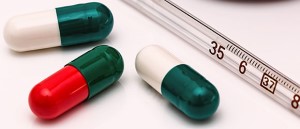Take care of your capsules照顧您的膠囊
Take care of your capsules照顧您的膠囊
Take care of your capsules照顧您的膠囊

TAKE CARE OF YOUR CAPSULES照顧您的膠囊
本文討論了膠囊溫溼度保存條件、處理方法,在充填面、運輸面討論如何保護好您的膠囊。 -撰文者BioCaps技術總監JimMoorhead (大豐膠囊美國總代理)
Whether they’re made from gelatin, hypromellose, or pullulan, hard capsules are mistreated in every way possible. They’re stored at the wrong temperature and humidity, left uncovered overnight (or longer) in the filler’s hopper, handled roughly while in the carton or outside it, and so on.
Heat and humidity
People too often focus on making capsule storage convenient and don’t think enough about heat and humidity. But those elements are crucial to good capsules, just like they are during shell manufacture, typically in a process that —aside from computer control —has changed little since Arthur Colton introduced it in 1931.
The process use side-by-side lines that dip metal pins into a gelatin solution, with one line forming the caps and the other line forming the bodies. Each line is approximately 40 feet long and uses 1,250 to 1,700 pin bars, each with about 30 stainless steel pins. These high-tolerance pins determine the diameter of the caps and bodies, and the temperature and viscosity of the gelatin determines the wall thickness. After dipping, the pin bars rise to a drying deck, where heated plenums bring the capsules to the proper moisture level. The moisture content determines the shrinkage, which must be uniform so that capsules stay together in the carton but separate at the capsule filler. In the final step, the caps and bodies are stripped from the pins, cut to length, and joined.
Once the capsules reach your site, how they’re handled will affect capsule quality and thus the performance of the filling process and the quality of the end product. For best results, store empty capsules in a controlled environment at 15° to 25°C and at a relative humidity of 35 to 65 percent. Filling rooms should be held at approximately 22°C with 50 percent humidity. Even under those conditions, however, don’t leave capsules overnight in an uncovered hopper. They may lose moisture, become brittle, and/or lose their shape. They may also become loose and fall apart.Handling
Handling
Just because capsules make a great “package” for your formulation, doesn’t mean you should treat them like freight. Handle them gently. That means not using metal scoops to transfer them from the carton to the hopper. Nor should you place full bags of capsules atop the filling hopper and dispense them by cutting a hold in the bag. It might seem like a good idea because it’s fast, but you can cause breakage, separation, and deformation of the shell, any of which can lead to other problems. Instead, use a larger hopper, load from overhead, or use a belt conveyor. I don’t recommend using vacuums or other pneumatic conveyors because they handle the shells too roughly. Everyone should understand that the capsules are a highly specified, fragile component and integral to delivering the dose in the correct amount and at the correct release rate.
Blaming the capsule
I’ve been a customer technical service representative for capsules for nearly 25 years and I’ve worked in the capsule business for almost 40 years. As you might expect, I’ve seen the good, the bad, and the ugly in both the pharmaceutical and dietary supplement industries.
What’s surprising is that I seldom meet people who appreciate how capsules perform. Too often, they’re just a source of problems. Is the operation not running right? “It’s the capsule.” Or, “Your capsules are falling apart, “and its converse, “They won’t separate.” Another oldie but goodie: “They’re brittle.”
OK, it’s possible the capsule is at fault, but in most cases—upon closer examination—I find that the capsules are just fine. Or at least they were until someone stored or handled them improperly. Just as often, the problem is the formulation. As I wrote in the January 2008 issue, the capsule filler needs a formulation that matches its capabilities. That includes lubricating the formula and knowing its compactability. Plus, as obvious as it sounds, double-check so you know exactly how much formula the capsule can accept.
Conclusion
All this information is available from your capsule machinery supplier and your capsule supplier. They may also offer training, so there’s no excuse: Familiarize all your employees with the methods and operations necessary to ensure a consistent dosage form that meets GMP and international standards.
Jim Moorhead is director of technical service at BioCaps Enterprises, 9098 Telstar Ave., Suite 309-310, El Monte, CA 91731. Tel 877 277 2282, Fax 877 277 2889.
Website: www.biocaps.net.